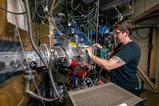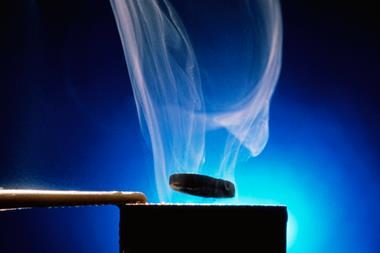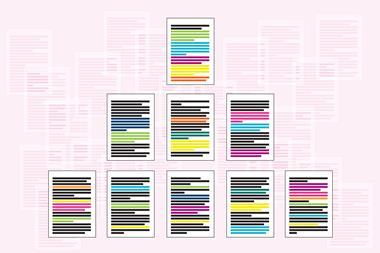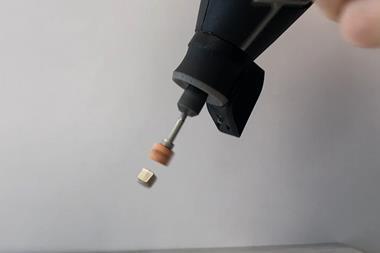A group’s claims surrounding a potential room-temperature superconductor have collapsed after a third high-profile paper was retracted amid allegations of data manipulation and scientific misconduct.
A superconductor is a material that offers no electrical resistance. In theory, a room temperature superconductor would allow a host of technologies including magnetic levitation trains, efficient electrical grids and quantum computers. However, until recently superconductivity had only been recorded with materials at far colder temperatures below 150K.
A breakthrough was apparently made in October 2020, when a team led by Ranga Dias at the University of Rochester, US, and Ashkan Salamat at the University of Nevada, US, announced it had detected superconductivity in a carbonaceous sulfur hydride (CSH) at 288K (15°C). The only catch was it occurred while the material was in a diamond anvil cell at a pressure of 155GPa – about 1.5 million times Earth’s atmosphere. Even so, it was hoped that this could lead to other superconductors that did not require such intense pressure.
However, the paper was immediately questioned by others in the superconductivity community, in particular by Jorge Hirsch from the University of California, San Diego, US, who highlighted the lack of raw data – and campaigned for almost 13 months for it to be released. Over the next two years, Dias’s work drew repeated criticism, including suggestions of deliberate manipulation of the data, constituting scientific fraud, and allegations of plagiarism earlier in his career. Dias and Salamat, meanwhile, stood by their work, retorting that their research ‘is either not understood or deliberately ignored by Hirsch [and his co-authors]’. In September 2022, against Dias’s objections, Nature decided to retract the carbonaceous sulfur hydride paper, following questions ‘raised regarding the manner in which the data in this paper have been processed and analysed’.
Far from being defeated, in March 2023 Dias and Salamat published a second paper, again in Nature, this time proposing room-temperature superconductivity in lutetium hydride, and at much lower pressures. This gained a new level of credence after the results were independently confirmed in an arXiv preprint by a group led by Russell Hemley at the University of Illinois, Chicago, US.

However, the paper was marked for review over ‘the reliability of data presented’ in September. It has now been retracted following both ‘credible, substantial’ concerns ‘regarding the reliability of the electrical resistance data’, and at the request of eight of the authors – including Salamat – who believe the paper ‘does not accurately reflect the provenance of the investigated materials, the experimental measurements undertaken and the data-processing protocols applied’. Dias and two other authors, both at Rochester, have not commented.
A third paper by the team had previously been retracted by Physical Review Letters in August, again over ‘serious doubts’ about the origins of the data – only Dias stood by the paper.
Speaking to Chemistry World about the retraction, Hirsch said he had ‘expected it would happen. I found it really strange that Nature would accept a paper without asking for more explanation about the first [retracted] paper.’ He emphasised, however, that the entire saga would not have happened at all if all the paper’s data had been available from the start. ‘What made this come to light was, starting in 2020, I asked Dias for the underlying data … the reason [the paper was retracted] is he released it. If he hadn’t, we would never have known. I feel sorry for Dias. I have no doubt he believes his material is a superconductor.’
The retraction is yet another blow to the superconductivity community, following a failure to recreate results in two preprints suggesting another material, LK-99, could be a room temperature and room pressure superconductor.

















No comments yet